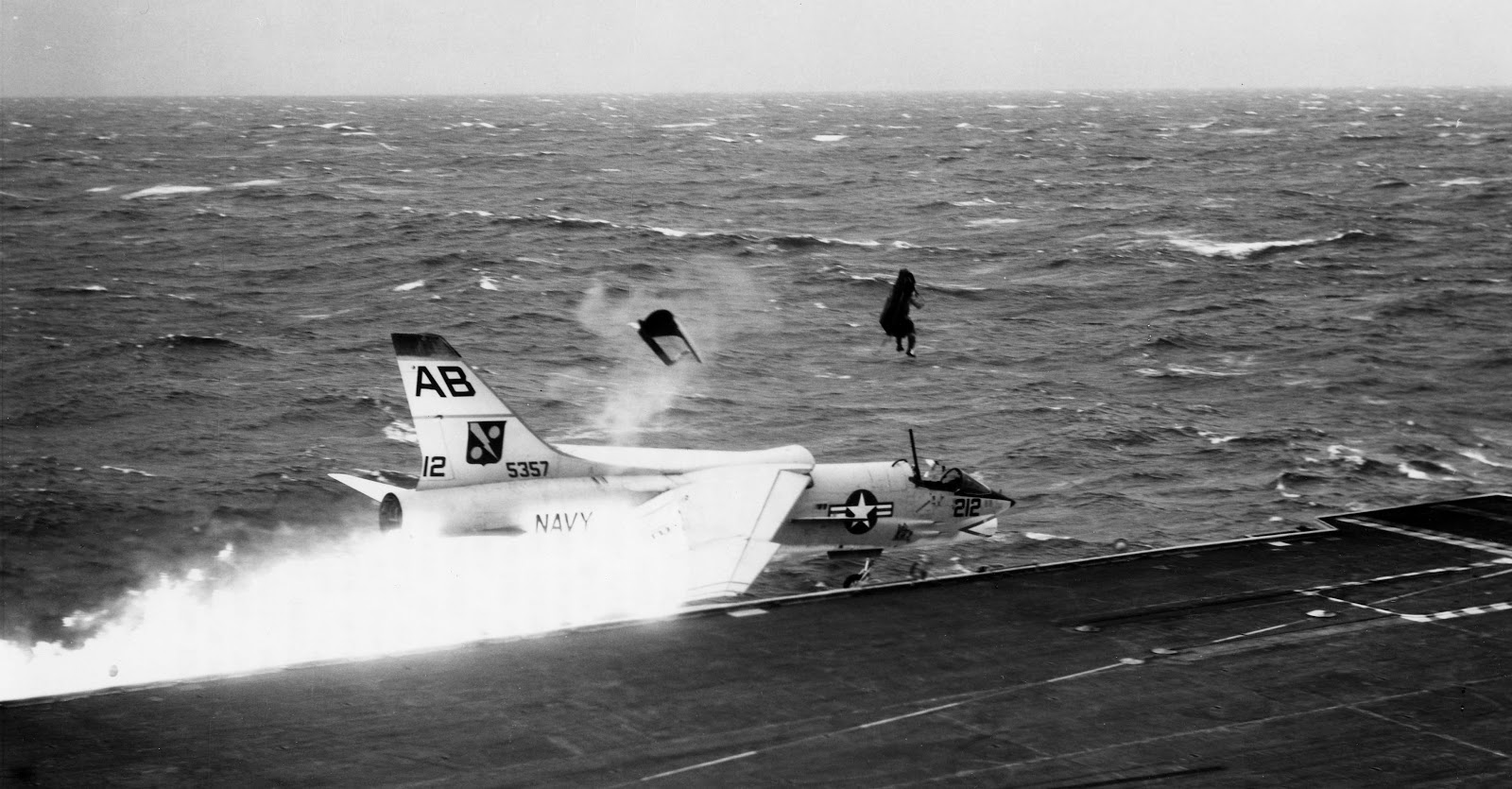Re: My build and review of Tamiya's 1/350 scale USS Enterprise, (CVN-65)
On the F-8U vs. F-4 issue, for all I know, I don't really think that with the Phantom II the navy deliberately chose the inferior aircraft for political reasons.
When that aircraft came along, it was probably something like a gateway into a new era. It was big, highly technical in it's operation (had a 2nd guy for radar work) and it brought along new (BVR) missiles.
The F-8U Crusader III also carried the same BVR missiles. It was capable, like your last picture of the F-4 of carrying four Sidewiders (AIM-9) and four Sparrow (AIM-7). It was also going to be capable, like the F-8 Crusader before it, of carrying air to ground ordinance.
The F-8 U Crusader III and the F-4 Phantom II were competing against each other to replace the F-8 Crusader.
The Crusader III was not picked principally because the Navy wanted a dual engine dual pilot aircraft.
Well, now we have dual engine Hornets flying all over the place with single piltos, and we are about to make the largest purchase in the history of the US Military with a single engine aircraft. So...full circle.
I guess people really expected it to be a revolution in air warfare. Initially it didn't even come with a gun, because the idea was to shoot it's foes down from miles away using it's advanced radar / missiles combo. But as so often, that revolutianary transition didn't go so well, as that BVR advantage didn't really come to play operationally so soon. So the F-4 eventually got a gun. Initially as a pod mounted below the fuselage.
Exacty, the F-4 Phantom was actually losing some dog fights because when it came to knife fighting range, it had no gun, and the gun was necessary...and it still is.
[
In hindsight, for Vietnam the Crusader III might have been the better plane for the then current air warfare reality. But I think in the long run, the F-4 really did point into the future, as it went on to become a very succesfull and long serving aircraft. Both in A-A and A-G, also delivering early LGBs.
The F-8U could have led to that same spot, IMHO. It was faster, higher flying and far more manueverable. It could carry the same AA missiles and was A2G capable. I remember the competition and after the loss, I remember my dad (who would move on to the very successful A-7 Corsair II competition) talking about it very directly. The Navy
wanted a dual engine, dual pilot aircraft, and that was the deciding factor. Clearly the F-4 had to be adequate in the air to air role...but an aircraft that was masterful in it was turned away.
If you have ever wondered why there were so many similarities in the external design of the F-8 Crusader, the F-8U Crusader III, and the A-7 Corsair II, it was because my Dad was the lead dynamics engineer on all of them. He was also the lead on the XC-142A STOVL cargo aircraft for the Navy which actually won a competition but then was cancelled by McNamara back then. Another aircraft before its time. He was very involved on the F-7 Cutlass before the F-8 Crusader, but was not the lead at that time. He ultimately finished his career after Lockheed acquired Vought, in designing and producing hyper-velocity missiles for attack aircraft. Knetic energy warhead weapons to be used as tank killers and the like.
That program allowed for very accurate direct fire missiles, at hypervelocity speed, with shaped depleted uranium warheads that could cut through spaced homogenoeus tank armor like a knife through butter and spall off on the inside filling the compartment with hot plasma shrapnel. They debuted in the 1st Gulf War and were improved upon since.
Those units, which have the range and effectiveness of a Maverick missile, cost about $100,000 each instead of well over a million dollars each. Anyhow...he worked on some neat stuff and was constantly out in New Mexico at the various ranges testing it against captured Russian hardware provided by Israel and the CIA.
At any rate, back to the aircraft discussion....here we are many, many years later, and we we are back to many single pilot fighters, and going to a huge purchase of single engine aircraft...the F-35C for the Navy.
This does not mean the F-35 is bad in the least...no more than the F-8U III was. It just means that some of those "ideas" and conclusions that figured so heavily into decisions in the late 1950s and into the 1960s have been proven over the years, to not be as necessary as they though back then.







